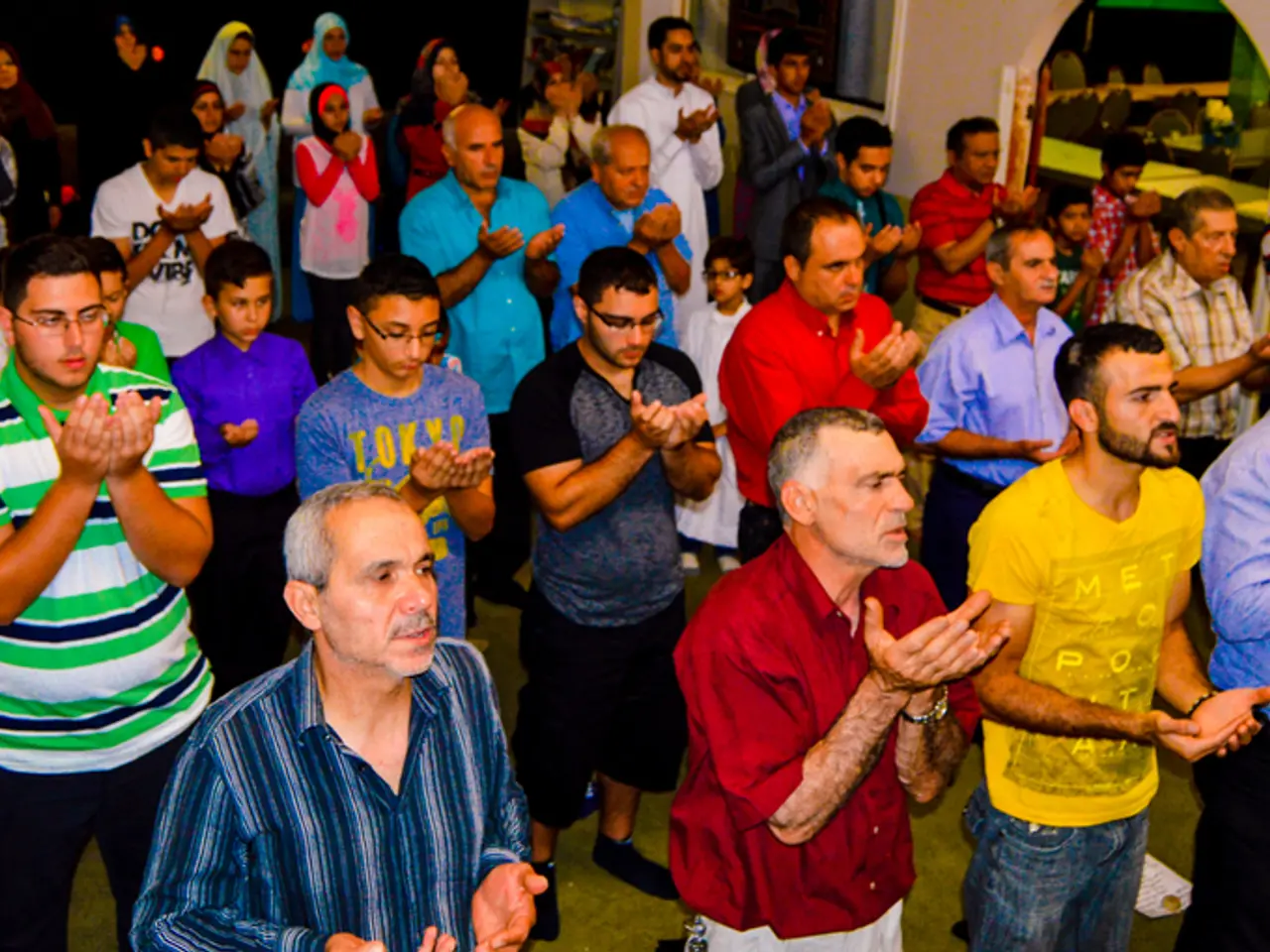Mental Health and Religious Beliefs Need Reconciliation
In a groundbreaking move, religious leaders and mental health professionals are joining forces to offer comprehensive support for individuals facing mental health crises. This collaboration aims to integrate spiritual and clinical approaches in a respectful, complementary manner that honours individuals’ religious beliefs.
Key strategies for this partnership include joint training and education, where faith leaders are equipped with basic mental health knowledge and crisis intervention skills. This empowers them to identify signs of distress in their communities and guide individuals towards appropriate clinical help.
Combining religious coping and professional treatment is another crucial strategy. Many individuals find the greatest support when professional help-seeking is combined with religious coping strategies. Mental health interventions that recognize and incorporate the person’s spiritual practices tend to be more effective and culturally sensitive.
Open dialogue to reduce stigma is another essential aspect of this collaboration. Religious leaders can promote open conversations about mental health within faith communities, creating safe spaces to discuss struggles without judgment.
Both parties should also maintain mutual respect for spiritual and clinical perspectives. A balanced approach where the Holy Spirit and medical science coexist in care allows for a holistic healing process.
Mental health professionals can develop spiritual competence to engage clients in conversations about spirituality, meaning, hope, and growth. This facilitates a collaborative, holistic healing process where spirituality is seen as a potential source of resilience and transformation.
Faith-based organisations can collaborate with public health and mental health providers to deliver services within familiar religious settings. This partnership leverages faith gatherings to reach vulnerable populations, offering services like harm reduction, suicide prevention, social support, and educational materials.
This collaborative framework can significantly enhance support for individuals in mental health crises while honouring their religious identity and beliefs.
However, it's important to note that traumatic experiences, such as sexual assault, can alter synaptic functions in the brain, particularly fear circuitry. Therefore, messages in church services must be carefully crafted to avoid unintentionally harming those struggling with mental health issues.
The author, a mental health professional who works with clients of various religious backgrounds, including their own Christian faith, recalls a recent session with a client who lost their spouse suddenly and unexpectedly. The client expressed feelings of numbness and confusion. The author questions whether emotional messages in church services, such as being called "dead wood" if a song does not move one's heart, would be beneficial for a grieving Christian client like the one they saw.
While the author does not question the good intentions of the church leaders, they express concern that such messages may unintentionally harm those struggling with mental health issues. It's crucial to remember that religious leaders are often the first point of contact in mental health crises. Therefore, their messages must be sensitive and supportive, offering hope and healing rather than causing further distress.
In conclusion, the synergizing of ministry and mental health could lead to new possibilities in helping those in need of hope, assurance, and healing. By bridging the gap between religion and mental health, we can offer comprehensive, compassionate care to those who need it most.
[1] National Council for Behavioral Health. (n.d.). Faith-based partnerships. Retrieved March 18, 2023, from https://www.thenationalcouncil.org/advocacy/faith-based-partnerships/ [2] Substance Abuse and Mental Health Services Administration. (2019). Spirituality and religion in mental health and substance use disorder treatment. Retrieved March 18, 2023, from https://www.samhsa.gov/captel/spirituality-and-religion-in-mental-health-and-substance-use-disorder-treatment [3] National Alliance on Mental Illness. (n.d.). Faith and mental health. Retrieved March 18, 2023, from https://www.nami.org/About-NAMI/NAMI-History-Timeline/Faith-and-Mental-Health [4] American Psychological Association. (2018). Spirituality and psychology: A research synthesis and analysis. Retrieved March 18, 2023, from https://www.apa.org/pubs/books/4731325.aspx
Therapists can develop spiritual competence to engage clients in conversations about spirituality, meaning, hope, and growth, which facilitates a collaborative, holistic healing process where spirituality is seen as a potential source of resilience and transformation.
Faith-based organizations should collaborate with mental health professionals to deliver services within familiar religious settings, offering services like suicide prevention, social support, and educational materials, thereby leveraging faith gatherings to reach vulnerable populations in need of mental health support.




